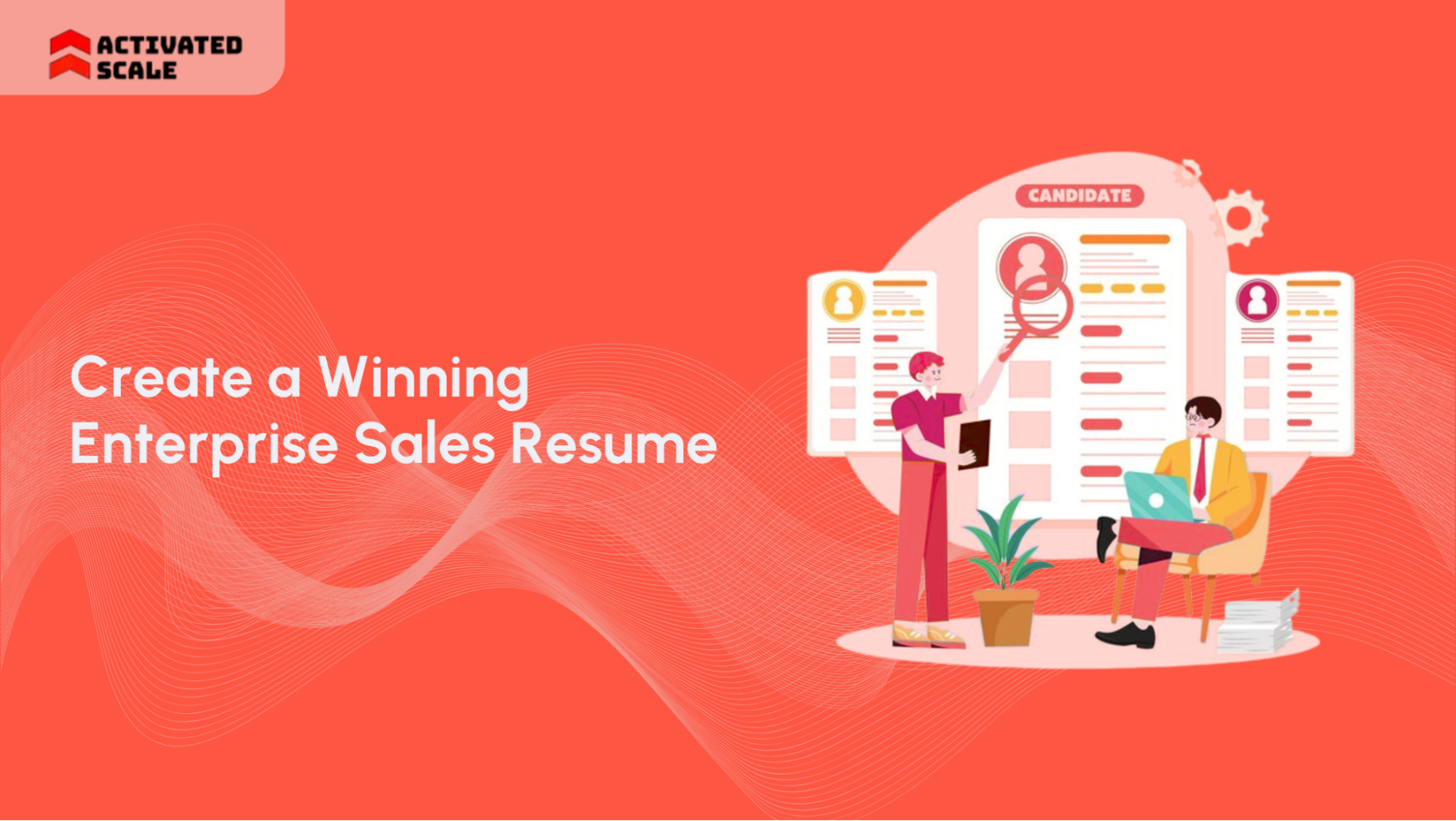Launching a new campaign? Your landing page is the gateway where potential leads first encounter your brand. You definitely want to capture their attention and convert them into engaged customers.
However, creating a landing page that truly converts requires more than good design; it demands a strategic approach. Every element plays a pivotal role, from the perfect blend of compelling copy and optimized forms to the smart use of visuals and A/B testing.
In this guide, we'll explore seven essential tips for crafting landing pages that attract views and actively convert visitors into leads.
7 Essential Tips for Creating High-Converting Lead Generation Landing Pages
From initial click to final conversion, here are seven tips for creating landing pages that are engineered to perform.
1. Define Your Goal and Audience
To create a landing page that effectively converts visitors into leads, start with a clear understanding of what you want to achieve and who you are targeting. This foundational step ensures that every element of your page is tailored to guide visitors toward a specific action.
Identify the Specific Action You Want Visitors to Take
Before designing your page, decide on the primary action you want visitors to complete. Whether it’s subscribing to a newsletter, registering for a webinar, or downloading a white paper, this goal should dictate the content and design of your landing page.
For instance, if your goal is to increase webinar attendance, your landing page should be designed to convince visitors to register for the event.
Understand the Needs and Characteristics of Your Audience
Knowing your audience is pivotal in crafting a landing page that resonates with them. Consider their demographics, challenges, and what solutions they might be seeking. This understanding will allow you to produce content that addresses their needs and motivates them to act.
For example, if you are targeting small business owners interested in improving their efficiency, your landing page might highlight a free ebook on time management strategies
2. Design Principles
Effective design is not just about aesthetics; it's about combining form and function to create a user experience that guides visitors toward your conversion goals.
Here are some fundamental principles to consider when designing your landing page for lead generation:
Use a Visually Appealing and Functional Design
The overall layout of your landing page should be attractive and clean, encouraging visitors to engage with the content. Ensure that the layout is intuitive, with a clear path to conversion.
Functionality is key, so every design element should serve a purpose and support the journey from visitor to lead.
Include a Hero Image and Engaging Visuals
A compelling hero image can capture attention and make a solid first impression. Choose an image that reflects the message of your landing page and resonates with your target audience.
Complement this with other engaging visuals that break down complex information and keep the user engaged, such as:
- Infographics
- Videos
- Animations
Ensure a Balanced Color Palette and Optimize Image Loading Speed
The color palette of your landing page should reflect your brand and help evoke the desired emotional response from visitors. A balanced color palette can enhance readability and user experience.
Additionally, ensure all images are optimized for fast loading times to reduce bounce rates, especially for users on slower internet connections.
Make the Page Mobile-Responsive and User-Friendly
With increasing numbers of consumers accessing websites via mobile devices, your landing page must perform flawlessly on any screen size. A mobile-responsive design ensures that all landing page elements look great and function well, no matter the device.
User-friendly navigation, readable fonts, and easily accessible calls to action are crucial for keeping mobile users engaged.
3. Craft Compelling Copy
The content you put on your landing page plays quite an important role in converting visitors into leads. Here’s how to craft copy that captures attention and compels action:
Write a Benefit-Driven Headline That Conveys Value Quickly
Your headline will be the first thing visitors see, so make it count. It should clearly articulate the value of what you’re offering concisely and compellingly. Focus on the benefits that resonate most with your target audience.
For example, “Increase Your Sales by 50% in Just 30 Days” directly addresses a desirable outcome for the visitor.
Include a Clear and Actionable CTA
Your call to action (CTA) should be clear and compelling. Use verbs that convey the benefit of taking action and ensure the CTA stands out on the page.
Ensure it’s easy to find and clicks through to a straightforward, short form or a direct benefit. The CTA should be action-oriented, creating a sense of urgency or excitement to encourage the visitor to take the desired action immediately.
Here are some examples of effective CTAs:
- Subscribe to receive exclusive insights on market trends.
- Download our free guide to improving your workflow.
- Sign Up for our webinar to learn cutting-edge marketing strategies.
- Register now to get early access to our new software.
- Download a Coupon for 20% off your first purchase.
Structure Copy with a Readable Format
Organize your copy in a logical, easy-to-follow format that guides visitors through your message and towards your CTA. Start with a strong headline, follow with a supportive tagline that expands on the headline, incorporate engaging visuals that illustrate your points, and conclude with your CTA.
This structured approach helps maintain the reader’s interest and leads them directly towards conversion.
Use Fewer Paragraphs and More Bullet Points for Readability
Break up dense blocks of text to enhance readability and engagement. Use bullet points to showcase key benefits or features succinctly.
This format makes it easier for visitors to scan the content and absorb the information quickly, which is especially important in a fast-paced digital environment.
Here’s an example:
4. Optimize Forms
To maximize conversions on your lead generation landing page, the design and functionality of your forms are critical. Here’s how to optimize your forms for higher conversion rates:
Reduce Entry Barriers
Keep your forms as simple as possible. Request only the essential information needed to move prospects through your sales funnel, such as a name and email address. Consider using conditional logic. To reduce form length, show or hide fields based on previous answers.
Reducing the number of fields minimizes the effort required from visitors, thereby increasing the likelihood of form completion.
Utilize Multi-Step Forms to Reduce Friction
Consider dividing the form into multiple steps for more complex interactions where more information is needed. Multi-step forms can feel less daunting than long ones, as they don’t overwhelm users with too many fields at once.
Moreover, provide progress indicators and allow users to save their progress.
This approach can help keep users engaged by progressively collecting information in a more manageable and psychologically less demanding way.
Ensure Forms are Mobile-Optimized
Given the rising prominence of mobile web browsing, make sure your forms are easy to fill out on smartphones and tablets. This means larger form fields, responsive design, and accessible submit buttons.
Additionally, reinforce the value of submitting the form by clearly stating what the users will gain, whether it's access to exclusive content, a free trial, or a personalized quote.
Always keep the submission button visible and use enticing language like “Get Your Free Guide Now” to encourage clicks.
5. Leverage Social Proof
Social proof is an effective strategy for converting visitors to your lead generating landing pages because it establishes credibility and trustworthiness with potential clients. Here’s how to effectively leverage social proof:
Include Authentic Testimonials with Personal Details
Testimonials from satisfied customers can greatly impact how potential leads make decisions.
Include:
- Collect testimonials from satisfied customers
- Include personal details about the customer to make testimonials more relatable.
- Use high-quality photos or videos to add a personal touch to the testimonials.
For instance, “John D. from New York says: ‘This product doubled our efficiency in just two months!’” provides a personal touch that can make the testimonial more relatable.
Add Trust Badges and Privacy Policy Link to Build Credibility
Display trust badges from recognized authorities or security certifications to convince visitors that their data is safe with you. These could include SSL certificates, accreditation from industry organizations, or badges from payment processors if transactions are involved.
Additionally, clearly link to your privacy policy next to form submissions to reinforce transparency about how you handle user data.
Showcase Case Studies and Relevant Client Logos
If applicable, include case studies that detail how your product or service has helped other businesses or individuals. This will show potential customers what they can achieve by using your offering and serve as tangible evidence of your expertise and success.
Featuring logos from well-known clients or partners can also enhance your brand’s authority and trustworthiness. Displaying these logos prominently can instantly communicate value and reliability, encouraging new visitors to convert with more confidence.
Also read: Tips for Social Selling on LinkedIn and Understanding Its Importance
6. Use Directional Cues and Visuals
Directional cues and strategic use of visuals can improve the effectiveness of your lead generation landing pages by guiding visitors' attention to the most important elements, such as the CTA.
Here’s how to effectively implement these design tactics:
Incorporate Elements to Guide the Eye Towards the CTA
Use visual elements like arrows, lines, or images where the subjects look towards the CTA to draw the visitor's eye in that direction naturally.
Animated elements can also be effective if used sparingly; for example, a subtle animation that points towards or highlights the CTA can help ensure it doesn’t go unnoticed.
Ensure Visuals are Relevant
Every visual component on your landing page should reinforce the message and value of the offer. Use high-quality images or graphics demonstrating the benefits of the product or service.
For instance, if you’re promoting a digital marketing tool, images of marketers actively using your software or screenshots of the tool in action would be pertinent and supportive of your messaging.
Adding a Video to Show the Product/Service in Action
Videos can be powerful tools for conveying complex information in an easy-to-digest format.
Including a video on your landing page that demonstrates how your product or service works or shows real people benefiting from it can boost engagement and credibility. Ensure the video is professionally produced, concisely, and placed near the CTA for maximum impact.
7. Test and Optimize
For lead generation landing pages, continuous testing and optimization are crucial for maximizing conversion rates. Here’s how you can effectively test and refine your pages:
Conduct A/B Testing for Key Elements
Also known as split testing, A/B testing is the comparison of two separate versions of your landing page (A and B) to see which one performs better. Test various elements to determine what resonates most with your audience, such as:
- Headlines
- Images
- Form designs
- Call-to-action buttons
For example, you might test a more direct CTA against a more passive one to see which yields a higher conversion rate. Use tools like Google Optimize or Optimizely to run these tests effectively.
Use Tracking Tools to Understand User Behavior
Heatmaps provide visual data on where visitors click, how far they scroll, and what they ignore on your landing page. Session recordings show actual visitor behavior on your page. Tools like Hotjar or Crazy Egg can offer these insights.
Analyzing this data helps you understand user interactions and identify areas where visitors might be getting confused or losing interest, allowing you to make informed adjustments.
For example, if many visitors are abandoning the form halfway through, you may need to simplify the process.
Regularly Optimize the Landing Page
Landing page optimization is an ongoing process. As market trends and consumer behaviors change, so should your landing page. To gauge your page's effectiveness, keep track of key performance indicators (KPIs) such as:
- Conversion rates
- Bounce rates
- The average time on page
Regular updates based on these metrics, combined with the insights collected from A/B testing and user behavior analysis, ensure that your landing page remains effective over time.
Also read: Using AI Tools for Effective Lead Generation
Conclusion
Crafting a high-conversion lead generation landing page requires strategic thinking, creative design, and continuous optimization. Use the tips mentioned above to:
- Enhance your page’s appeal
- Improve user experience
- Ensure that your content resonates with the intended audience
Yet, even with the best strategies in hand, achieving peak performance can often require a bit more expertise. That's where Activated Scale comes in. Our platform connects you with fractional lead generation professionals who can help refine your strategies and elevate your entire sales process.
Schedule a call with us today to take your conversion rates to new heights.
The Ultimate Guide to Hiring a Salesperson!
Get the step-by-step guide to hiring, onboarding, and ensuring success!
_edi.png)




